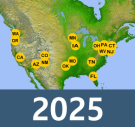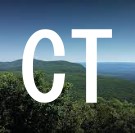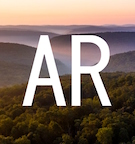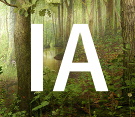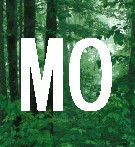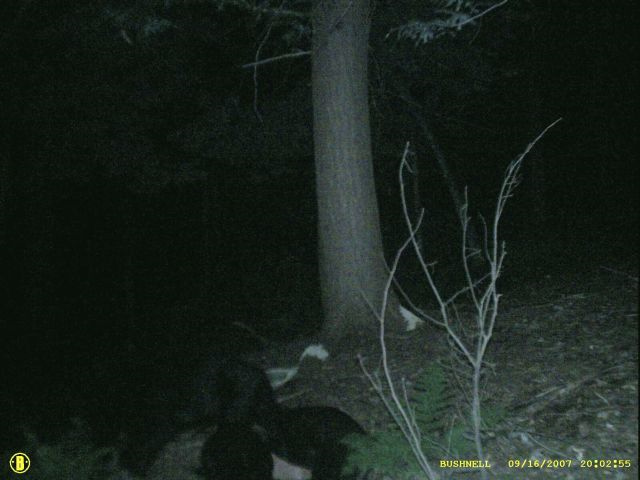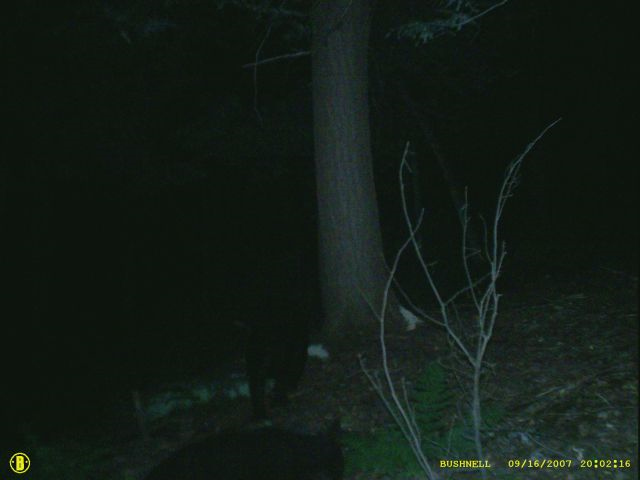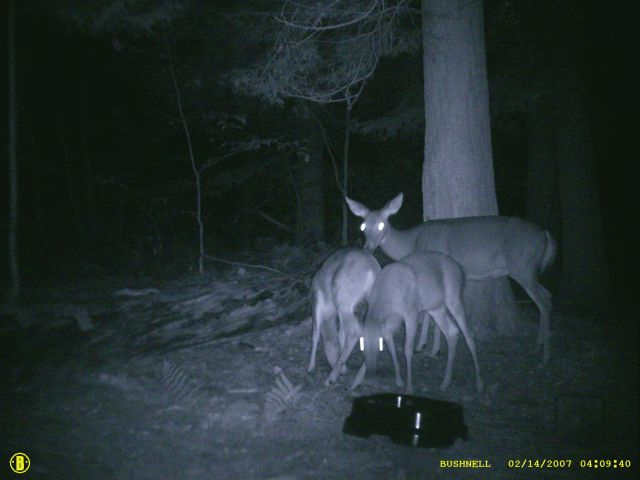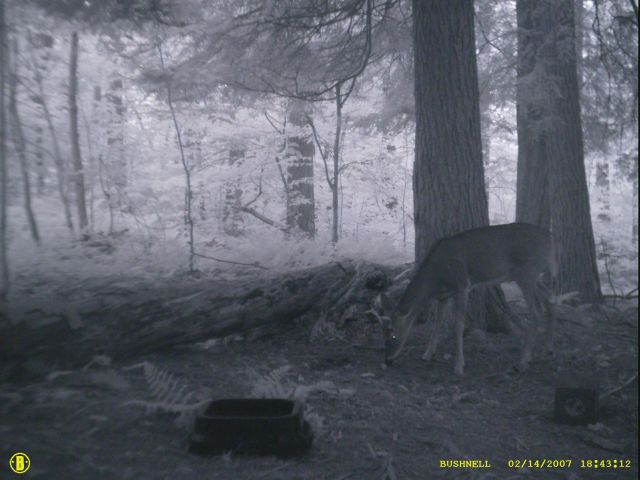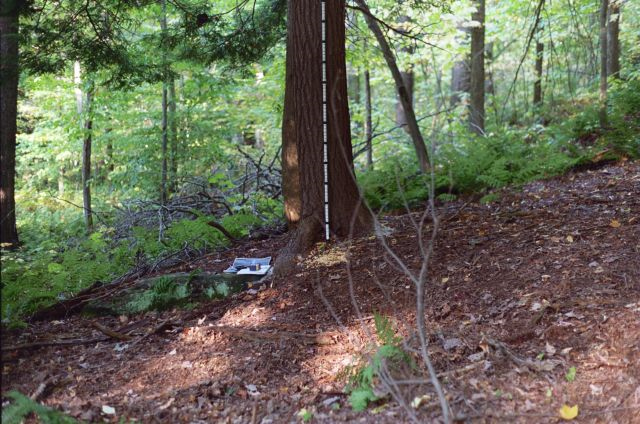|
|

|
Jacobs Photos - Pennsylvania, 9/16/2007
| |
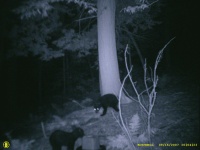 |
|
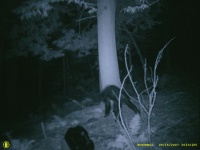 |
|
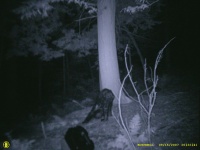 |
|
|
Image 1 : Bear Cubs
|
|
Image 2 : Unclassifed Primate?
|
|
Image 3 : Unclassified Primate?
|
|
Date: September 16, 2007
Location: Northwest Pennsylvania
Camera: Bushnell trail camera (automatic) with infrared (invisible)
flash. Camera placed by R. Jacobs.
Time of images: See time stamps on images - click icons above for
larger versions.
Figures in images: Bear cubs in first image; Young sasquatch in
two subsequent images.
Q: How do we know it's a saquatch and not a bear?
A: The distinction between ape anatomy and bear anatomy is most
visible in image 2. The figure has its face pressed against the
ground to smell some aromatic deer attractant mix (which the Jacobs
brothers said they sprinkled at that spot in order to get a centered
photo of a deer). Aside from the obvious
limb ratio issue, when a "bear" bends down to sniff
the ground, it shoud look more or less like large dog sniffing the
ground. If you have a large dog then you'll know intuitively that
a dog does not get in this position to sniff the ground, or even
to press its ear against the ground. Neither does a bear, no matter
how mangey it is. Apes, however, do get in this exact posture to
smell the ground.
Various newspapers reported that the creature is a "mangey bear".
This assertion originated from the spokesperson for the Pennsylvania
Game Commission. See the article debunking
the Penn. Game Commission
Several people who have spent a great deal of time with both
primates and bears (mainly zoo veterinarians) have consistentaly
told us right off the bat, that it "looks much more like
a primate than a bear."
And therefore even though we do not have the corpse of the animal
to disect, we say with confidence that the Jacobs creature is
not a bear.
Bear vs. Primate
|
|
|
|
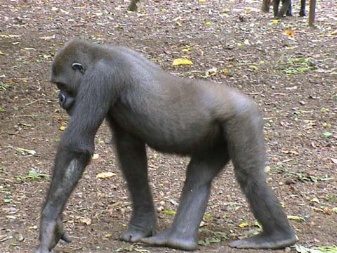
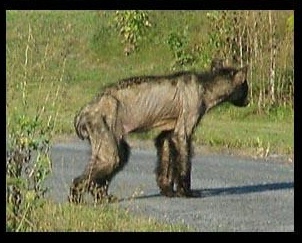
Photo of a mangy bear provided by
the Pennsylvania Game Commission
|
|
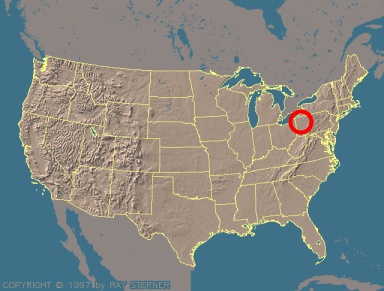
|
|
|
Scientists in fields related to biology, zoology and ecology
are formally trained to scientificially examine certain types
of evidence, but they are not trained to scientifically
examine controversial photographs of wildlife ... Therefore they
will tend to avoid making conclusions about controversial photographs.
They prefer to comment upon physical evidence.
After the Patterson footage was released in 1967, it took many
years before scientists became interested, and decades before
they figured out ways to study the footage scientifically.
An English Professor in Vermont was able to apply some mathematics
to the Jacobs photos within months of their release. His results
showed a scientific way to study the photos, and strengthened
the case that the Jacobs creature is a primate rather than a bear.
He focused on the different torso/limb ratios of bears and primates,
and the torso/limb ratios seen on the Jacobs creatures. He also
referenced the limb ratios of the bear cubs seen in the earlier
photo taken by the camera. The glacially slow inertia of the scientific
community will, in time, be affected by his analysis. See the
YouTube video above for his results.
|
| |
|
|
The three images at the top of the page were obtained with a Bushnell
trail camera in Northwest Pennsylvania on the evening of September 16,
2007 by R. Jacobs.
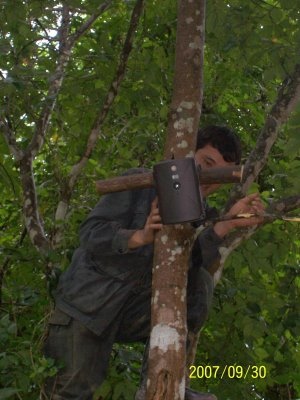 |
The same type of camera used to obtain the Jacobs
photos -- a Bushnell Trail Sentry.
The unit in the photo is being mounted on a tree in a game preserve
in Africa. |
Jacobs had placed the motion-sensing camera on a tree along a game
trail in a remote forest area in order to photograph any deer that might
be using the trail. He did this in preparation for the Fall deer hunt.
Jacobs was not trying to obtain images of a bigfoot/sasquatch.
The area in the foreground was baited with a deer attractant mix and
a mineral lick block. In the first image (the one with the bear cubs)
the mineral lick block can be seen sitting on a large black plastic
plate. One of the bear cubs is apparently licking or sniffing the mineral
block. In the two subsequent images the black plate is turned over and
leaning against the mineral block.
Several minutes elapsed between the image of the bear cubs and the images
showing the ape-like animal (see the time stamps in the lower right
corner of the images).
The second image shows the ape-like animal from a rear-side angle, with
its head obscured by its shoulders. In the third image the ape-like
animal appears to be smelling the ground near where the deer attractant
mix had been scattered.
Various anatomical elements can be seen upon careful examination of
the images, including a bare spot in the fur under the arm.
More details, data, and related images can be found in the
discussion forum for these photos.
These recent images from Pennsylvania are very significant to bigfoot
research. They likely show a young juvenile bigfoot (smaller than ~5
feet tall), as they have been described by eyewitnesses over the years.
Young juvenile bigfoots are typically described as quadrupedal (walking
on four legs), with the ability to climb trees or run very quickly on
all fours (See the New York Baby Footage).
They are sometimes seen alternating between a quadrupedal posture and
an awkward bipedal posture. Whereas the larger bigfoots (5 feet tall
and above) are almost never described as walking or running on all fours.
It was thought for a long time that any legitimate images of an adult
bigfoot would likely be dismissed by the public as showing a human in
a costume due to the bipedal posture of adult bigfoots, which is so
reminiscent of a human posture. In the case of a young juvenile (quadrupedal)
bigfoot, by contrast, the scientific debate would not revolve
around whether the figure could be a man in a costume. Rather, the debate
would revolve around what type of animal it is ... an entirely
different debate.
The BFRO has the privilege of informally naming the apelike-figure captured
in these photos. It will be referred to as the "Jacobs creature"
(like the "Patterson creature"). Formal, scientific, taxonomic
classification, usually cannot be derived from photographs alone, but
can be tentatively suggested.
Over the years we have heard of other decent photographs of these animals,
in other parts of the country, which have never been released to the
public, for various reasons. So we greatly appreciate the decision of
the Jacobs family to release these images to the public. If you are
inspired by these images as much as we are, please send an email of
thanks, along with your impressions and comments, to the Jacobs family,
via their lawyer, by emailing Jacobs_photos@BFRO.net
These images have been registered with the U.S. Copyright office by
the lawyer for R. Jacobs. The images are available to be licensed for
re-publishing. To inquire about licensing please send an email to Jacobs_photos@BFRO.net
All other comments or questions about these photos should be posted
on the BFRO's
public discussion forum.
|
|
More images related to the Jacobs Photos
|
| |
| The two images at the top of the page are the
only two images of the unidentified animal. The camera obtained other photos
that same night, and others earlier that same month. Some of those images
are shown below, along with some scale images of the same tree in daylight. |
|
|
The "Mama Bear" image ::: shows the
bear cubs huddling around the mineral lick with a larger bear -- likely
the mother of the cubs. Notice the nice shiny thick dark coat of fur on
the mama bear. It's not a mangy bear at all. Unlike the strange creature
that came by a while later that night -- this larger bear looks, not surprisingly,
just like a bear.
Notice also, this image was a color flash image, not an "invisible
flash " IR-sensitive image. This model of Bushnell trail camera (Trail
Sentry 2.1 -- from Walmart) can take both "invisible flash" shots
and color flash shots. It has controls which determine at which hour it
should switch from visible flash mode to invisible flash mode. |
| |
|
|
More of the Bear Cubs :::: This was a less clear (color flash) shot of the
bears. At some point after the bears the scene, the camera automatically
went into "invisible flash" mode. |
|
|
|
|
|
Deer in the same area :::: This image was obtained with the same camera,
but at a different spot, and on a different night a week or so prior to
the images at issue.
Notice the time/date stamp in this image. It was set incorrectly at this
point. This photo was not taken in February 2007. The Jacobs had not even
purchased this trail camera at Wal-Mart until August 2007. The image above
was taken in early September 2007. The time/date stamp was set properly
after this image was obtained.
|
| |
|
|
|
More deer ::: Different spot, different date (date incorrect). The camera
was still in IR ("invisible flash" mode) at this hour in this
shot. This shot was obtained a week or so before the main three images
were obtained.
|
| |
|
|
|
The tree in daylight with scale measure :::: This image was taken from
the same position and angle as the main three images above, a few weeks
after the creature images were obtained and after the Jacobs family contacted
the BFRO.
For more discussion about the scale analysis, see the
discussion forum thread about it.
|
| |
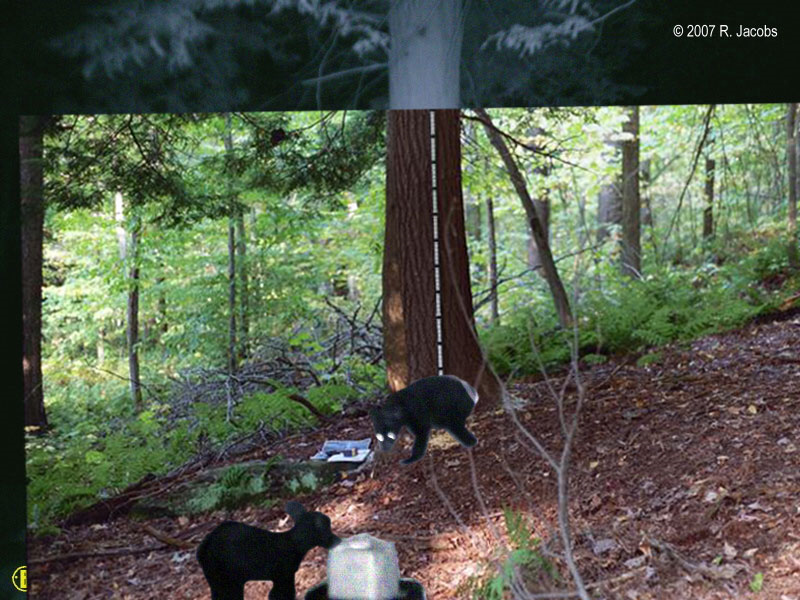 |
| |
| |
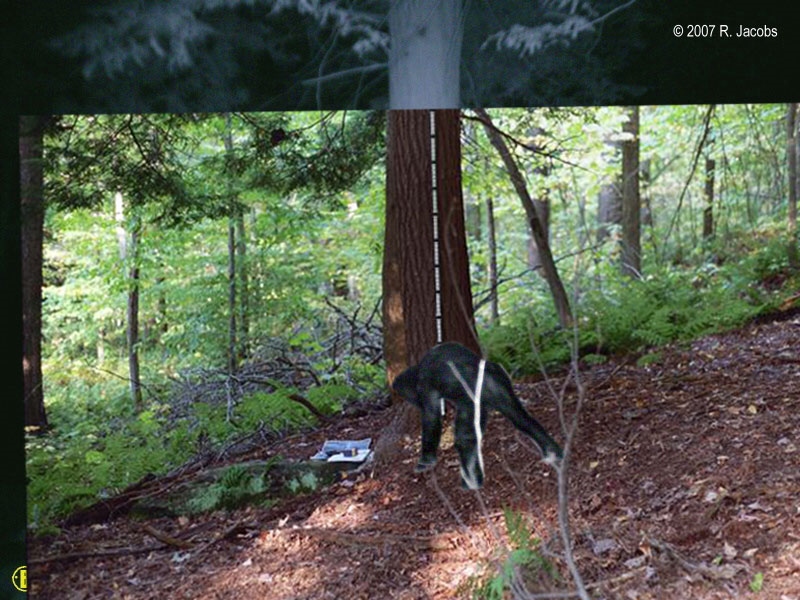 |
| |
| |
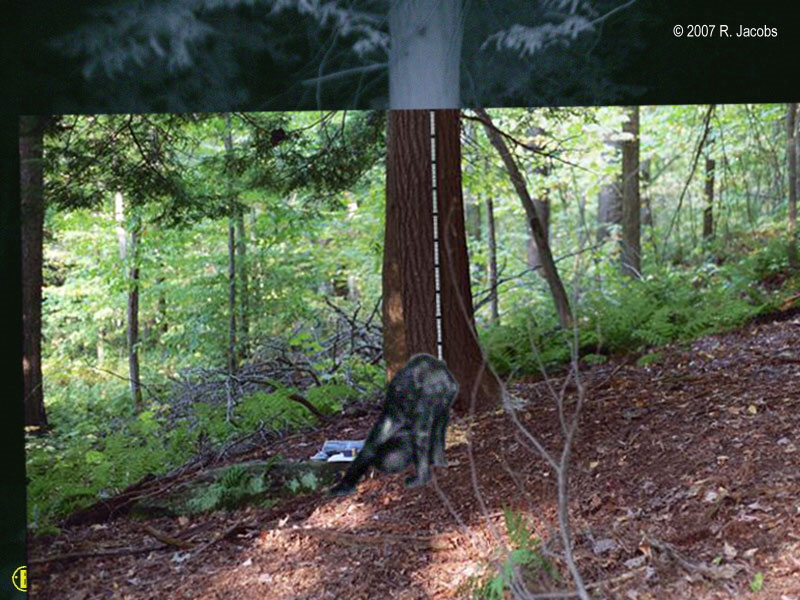 |
|

